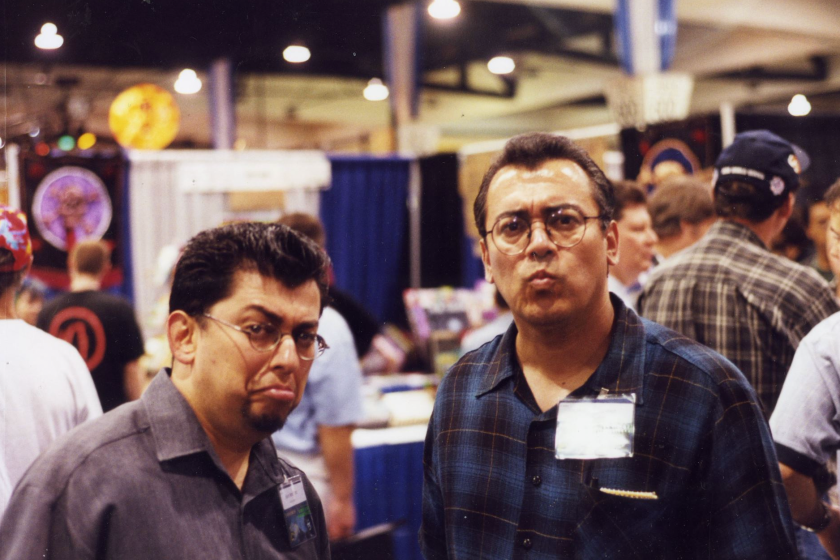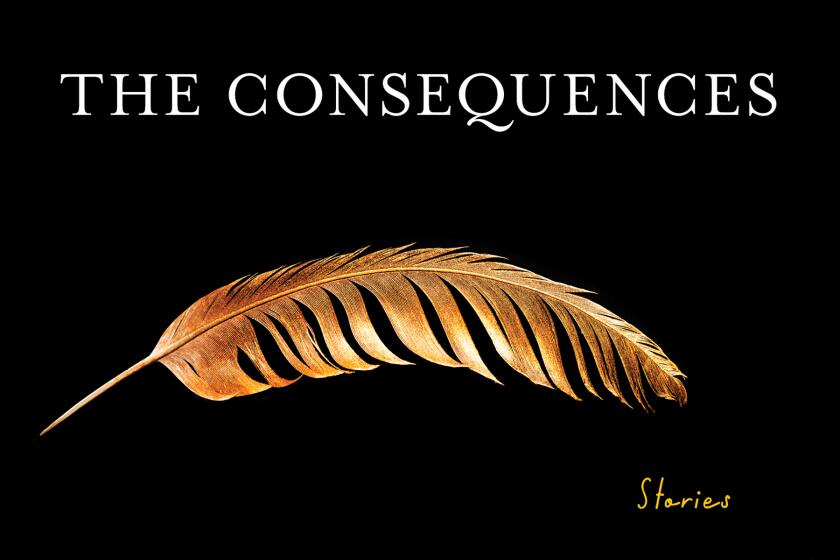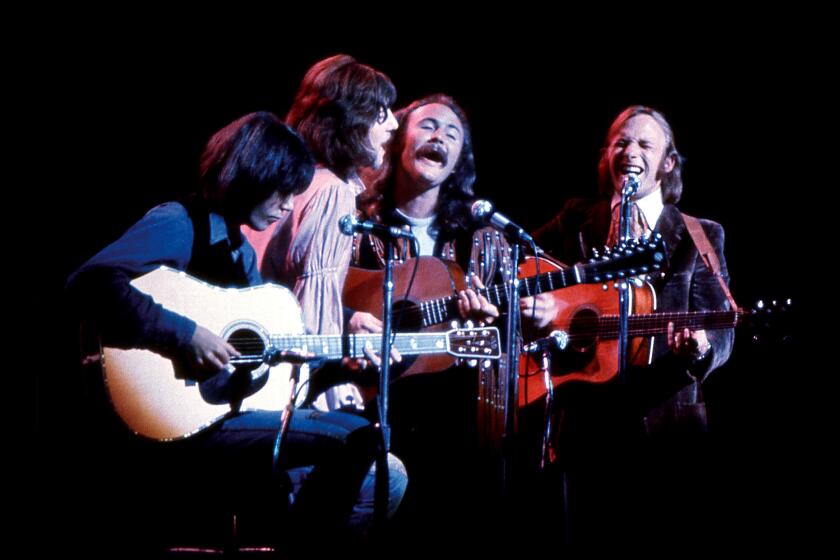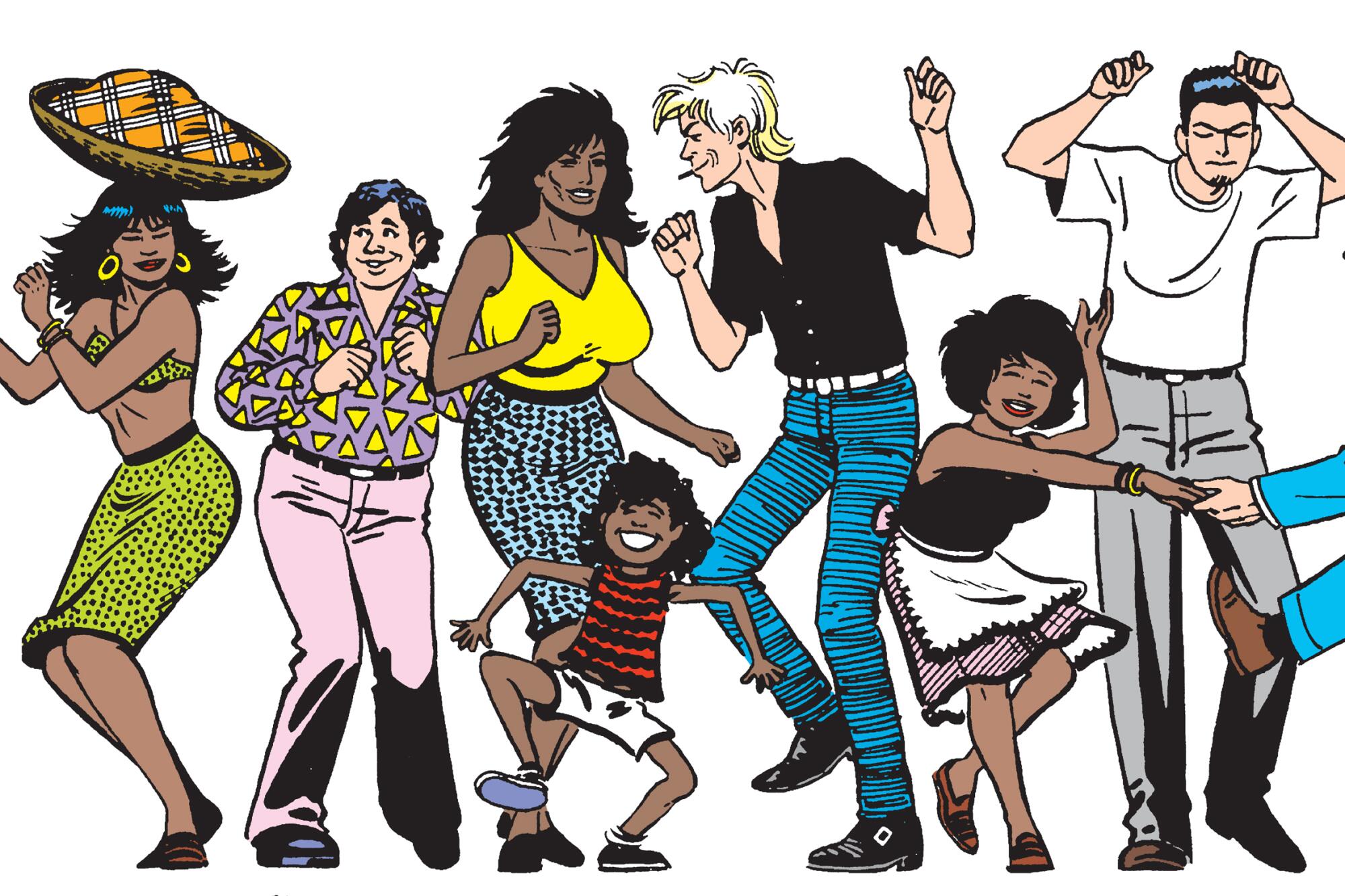
- Share via
On the Shelf
Love and Rockets: The First Fifty — The Classic 40th Anniversary Collection
By Gilbert Hernandez and Jaime Hernandez (with Mario Hernandez)
Fantagraphics: 2,200 pages, $400
If you buy books linked on our site, The Times may earn a commission from Bookshop.org, whose fees support independent bookstores.
Over four decades, the characters of “Love and Rockets” have collectively survived encounters with monsters, wrestlers’ body slams and the mayhem of mosh pits. In friends they have found bonds stronger than family; in family, they’ve faced their own worst traits. Some have chased sexual pleasure at the expense of emotional attachment; others have engaged in the deceits and elisions of fragile long-term relationships.
Always, they have enthralled.
In the world of comics, there is nothing quite like the work of Jaime and Gilbert Hernandez, beloved comic book auteurs — better known as Los Bros Hernandez — who have tracked the lives of largely female characters from reckless youth to anxious middle age.
In the process, they have changed U.S. comics, infusing the form with elements of Latin American folklore and Chicano life. In the 50 issues that make up “Love and Rockets,” along with subsequent standalone books that have carried its narratives into the present, everyman isn’t a man; she’s a mouthy Latina punk who will dodge a missile and shoot back, “If you were really hard core, you’d have thrown the full bottle.”
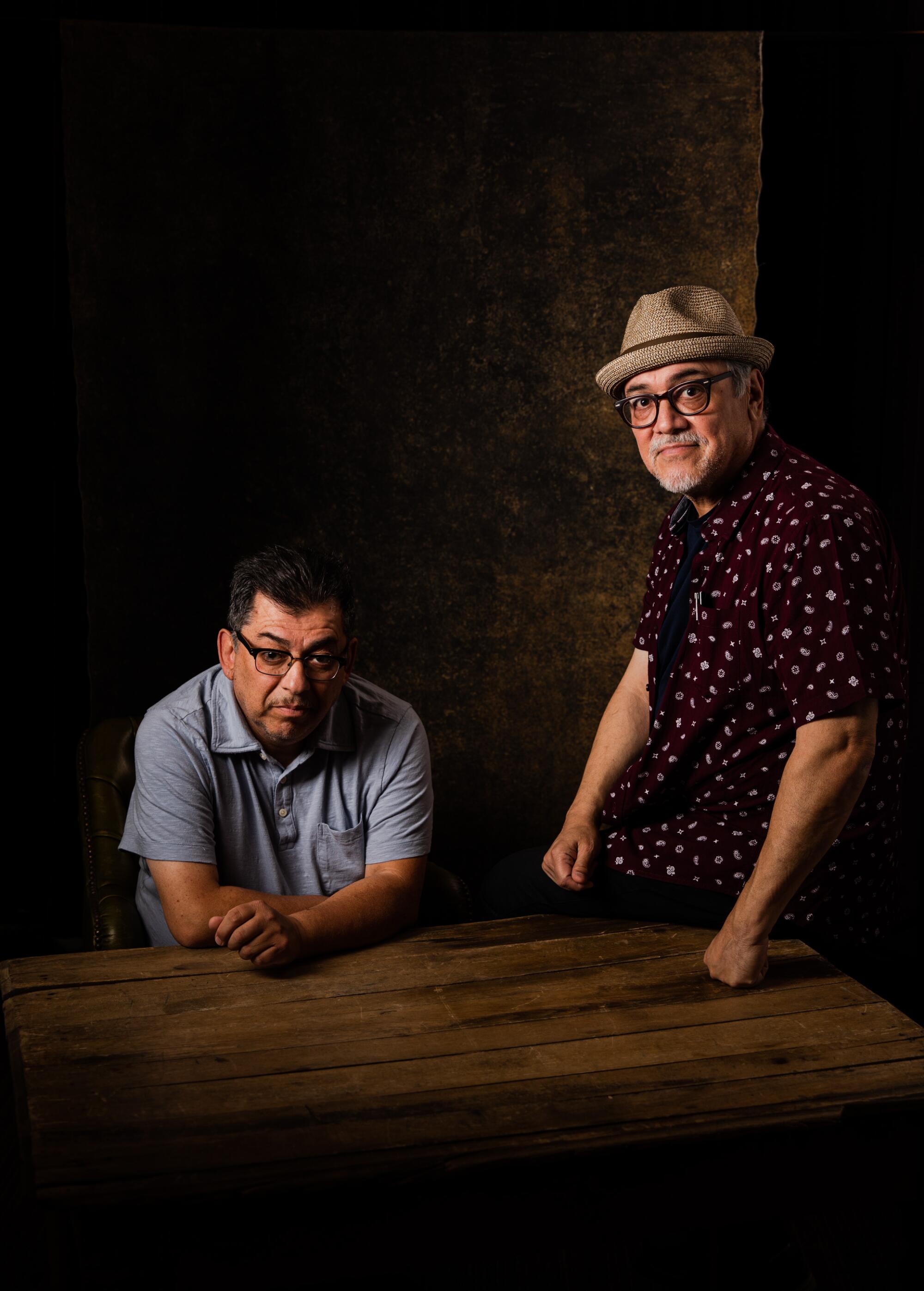
This moment marks as good a time as any to consider the legacy of Los Bros, figures who are regularly name-checked as influences by generations of artists and have a rack of industry awards to prove it. Now entering their éminence grise era — they’re both in their 60s — the pair were recently the subject of a one-hour documentary produced by KCET. And late last year, Fantagraphics released “Love and Rockets: The First Fifty — The Classic 40th Anniversary Collection,” which brings together a considerable portion of the brothers’ prodigious output.
The set includes the initial run of the “Love and Rockets” comics as they originally appeared, complete with cover art and letters pages. Also included are critical essays, interviews, sketches and other ephemera. It adds up to eight hardback volumes contained in a monochromatic slipcase, checking in at a whopping 27 pounds.
It is worth the weight.
Back in the Reagan era, long before intersectionality and gender fluidity were common terms of debate, “Love and Rockets” was depicting queerness, gender and race while simultaneously exploring the spectrum and hierarchies of Latino identity — mestizo, Black and Indigenous.
Decades later, much has been written about the comic’s prescience, many college lectures focused on its thoughtful (if otherworldly) deconstructions of these topics. But “Love and Rockets” is never didactic. What has made it such a lasting cultural artifact is its artistry. Many of the stories feel as fresh and as strange as they did in 1982, when Fantagraphics first republished a D.I.Y. comic created by a crew of brothers from Oxnard. (In those days, Los Bros also included a third brother, Mario — who left comics as parental responsibilities loomed.)
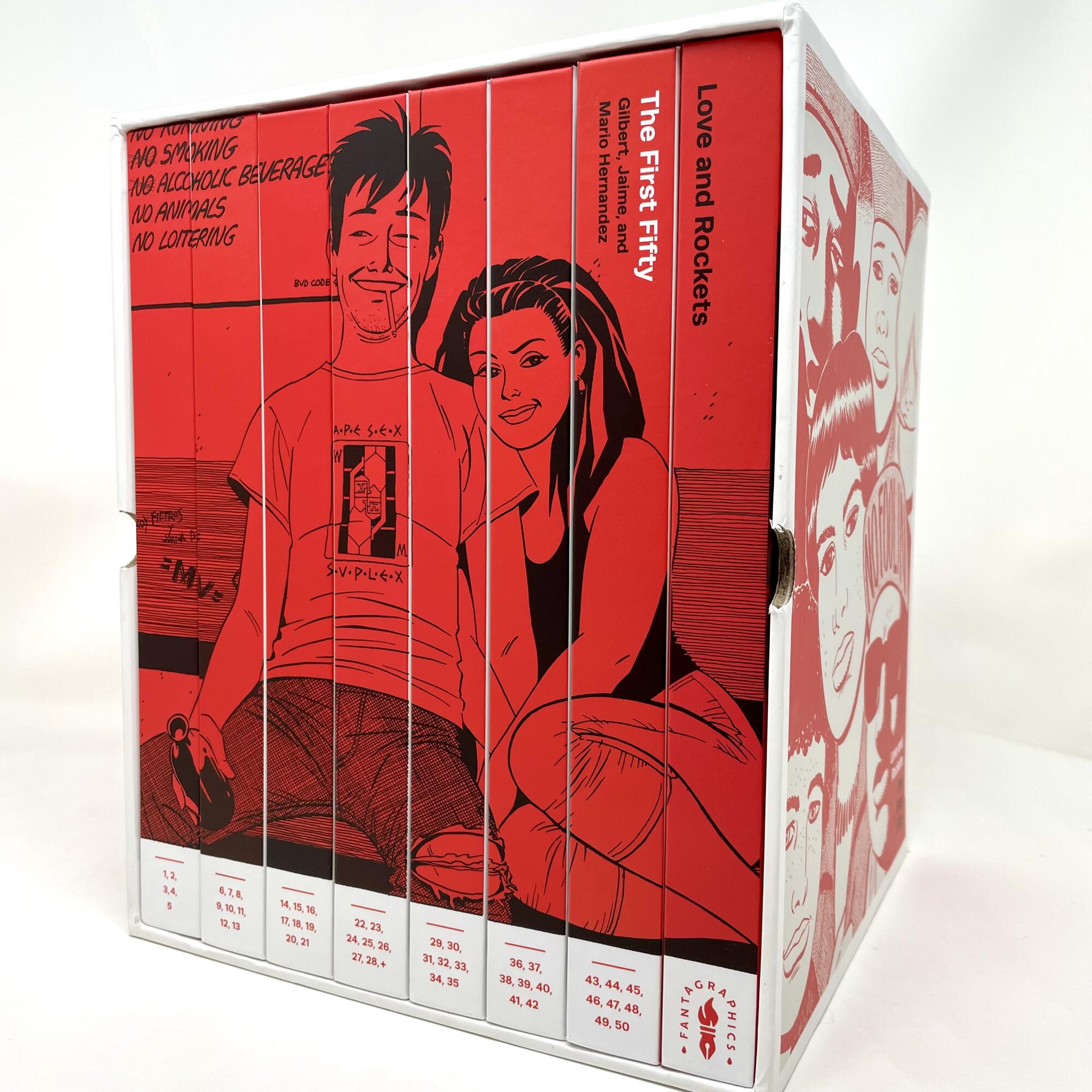
The brothers work together but separately; “Love and Rockets” collects their independently conceived narratives.
Many of Gilbert’s stories, rife with elements of magical realism, are set in the fictional Central American town of Palomar and revolve around the taciturn Luba, a mysterious figure with an even more mysterious past who seems to get ahead through sheer force of will. Among her foils and antagonists are the dreamy Heraclio, the gullible Tonatzin and the town’s irascible sheriff, Chelo. (Men may inhabit the “Love and Rockets” universe, but it’s a decidedly matriarchal place.)
Though the setting is fictional, Gilbert makes reference to real world events, such as the 1989 assassination of six Jesuit priests by military commandos in El Salvador. He is also an artist unafraid to delve into the abject: Luba’s origin story — a nightmare of abandonment and exploitation — features a blind aunt whose eye sockets contain only shadows.
“Love and Rockets: The Great American Comic Book,” a new documentary airing on PBS’ “Artbound,” celebrates creators Gilbert and Jaime Hernandez
Jaime’s tales, on the other hand, largely chronicle the lives of Chicano punks in Hoppers, a fictional stand-in for Oxnard. His narratives center on Maggie Chascarrillo and Hopey Glass, a pair of friends and sometime lovers whose relationship crackles with attraction and ambivalence. Maggie brings the “rockets” to “Love and Rockets” — opening the series as a rocket mechanic. Her circle includes an aunt who is a champion wrestler, a resident Goth named Isabel and sultry Penny Century, an arriviste married to a wealthy magnate with horns on his head.
The characters are outlandish, but they read like flesh-and-blood. In an early issue, Maggie is presumed dead in the wake of an explosion. After receiving the news, Hopey plays the tough, grumbling about how everyone is “acting so serious.” But in private, the facade cracks. Over several frames, you see her sitting in silence, her face slipping into a blank mask of shock.
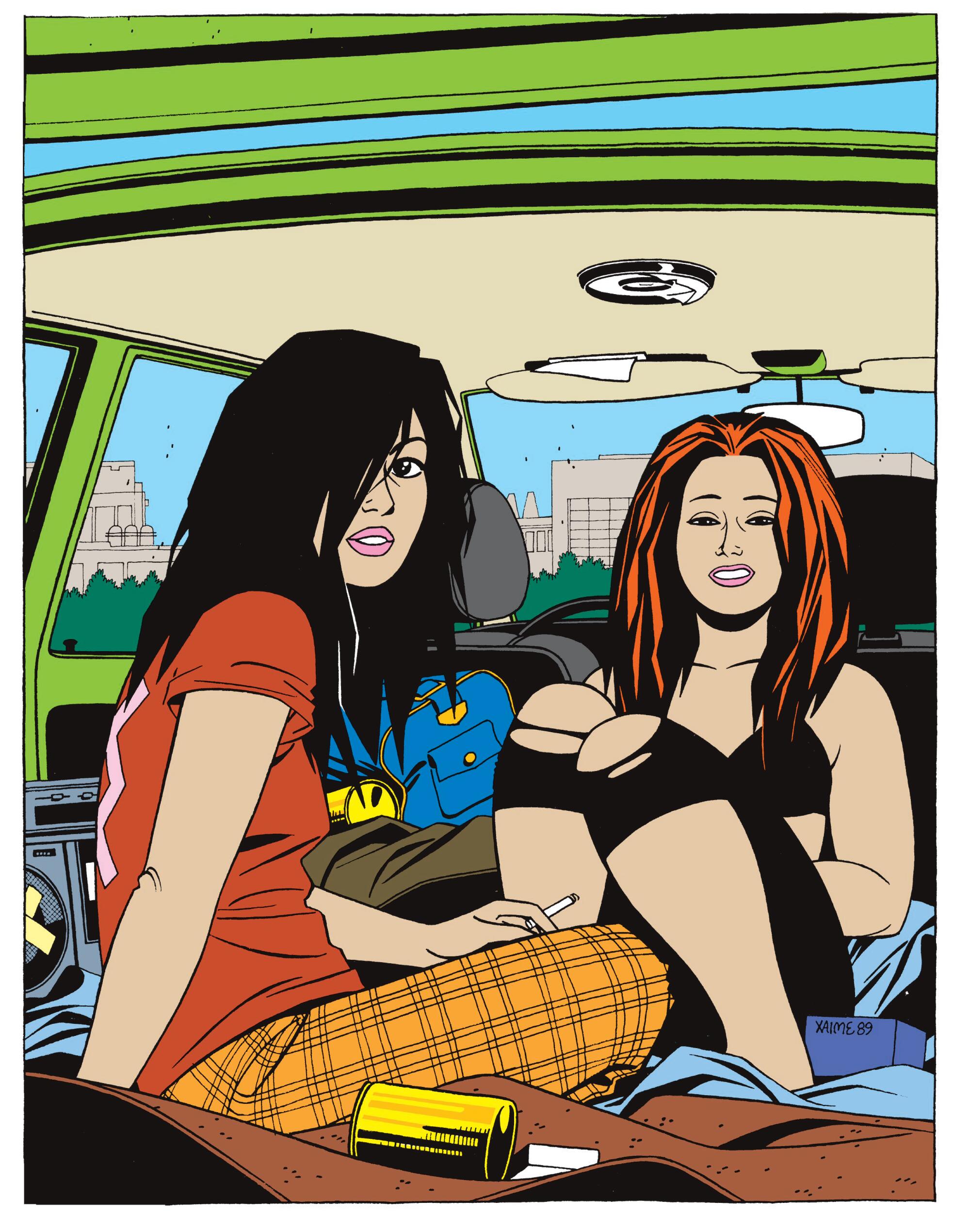
Los Bros Hernandez were young — in their early to mid-20s — when they began publishing “Love and Rockets.” The first volume of the box set shows them grappling with the influences of their youth, which ranged from the superhero stylings of Marvel artist Jack Kirby to the teen dramas of the Archie comics. (In issue No. 16, Jaime draws a wrestling manager as a deliberate Archie doppelganger.)
If the earliest issues feel untamed, by the fourth you begin to see the brothers settle into their respective styles.
Gilbert inserts visual references to Mesoamerican sculpture and surrealism with specific nods to Mexican painters such as Frida Kahlo, still a marginal figure in the ‘80s. Jaime channels elements of noir in some of his moodier sequences, using shadow to full effect. And some of his frames, in particular those bearing crowds of stout female wrestlers, look as if they could double as photos by Diane Arbus.
Muñoz’s stories are peopled by furtive figures who grapple with survival and loss. His most stunning depiction, however, is of the Central Valley itself
But ultimately, it’s the storytelling that keeps you turning the page.
In Issue No. 23, Jaime takes us into the world of Speedy Ortiz, an attractive young cholo whose affection for Maggie goes unrequited. After a series of altercations with rival gangs, Speedy is killed. This is a chronicle of a death foretold; his fate is announced at the outset, after which Jaime takes the reader through the inevitable. It’s also a tour de force: a series of elegant, often wordless frames saturated in black. You never see Speedy’s senseless death — the artist doesn’t cater to prurient interest — but his demise haunts the page in the same way it haunts everybody around him.
Gilbert, likewise, knows how to take a plot from slow simmer to frenzied boil. In “Human Diastrophism,” a narrative that runs through half a dozen “Love and Rockets” comics from the late 1980s, all is not well in Palomar. Tonantzin has been seduced by the spiritual and political ramblings of a jailed prisoner, and Luba is taking out her existential frustrations on one of her daughters. A group of men work on a mysterious excavation at the edge of the village as a horde of monkeys begins to descend on Palomar like a biblical plague. All the while, a serial killer roams.
Gilbert’s expressionistic drawing style brings a seething edge to the story and its violent culmination. I’d read the “Human Diastrophism” stories in the past, but returning to the box set, I found myself in a feverish marathon that kept me up until 2 a.m.
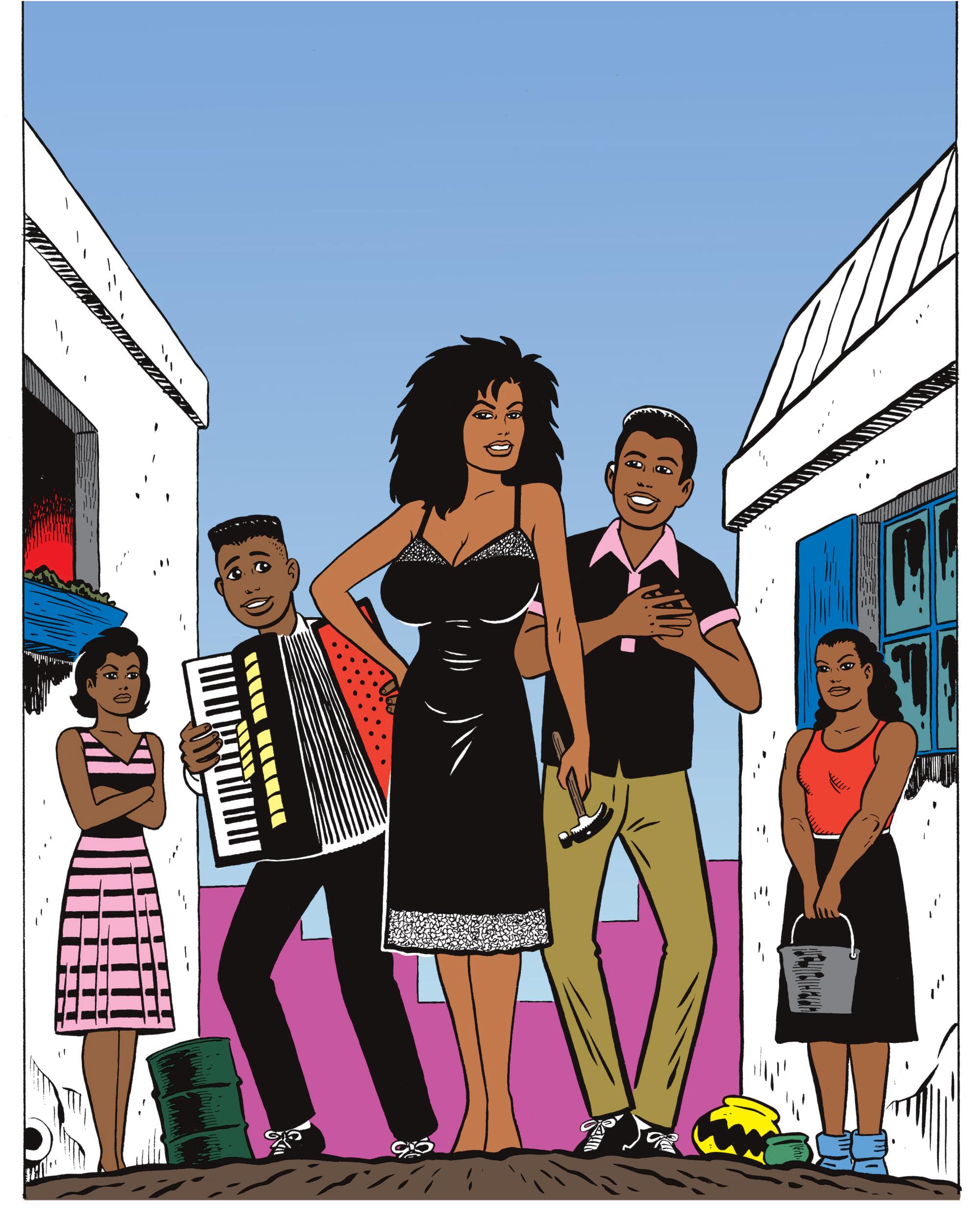
Gobbling up a couple thousand pages of comics over the course of days can be an overload: too much fantasy, too much melodrama, too much too much. Narratives that were intended to play out over weeks and months are suddenly compressed into a single sitting. But to read “Love and Rockets” this way (and yes, I read the entire set) is to see how dexterously Los Bros weave their narrative threads, consistently pushing their characters in new directions — and also forward in time.
In the MCU era, comic books are often thought of as storyboards, waiting to be animated. But the women and men of the “Love and Rockets” universe aren’t static. As we age, so do they. They gain weight, they cut their hair, they get practical jobs. Maggie gives up fixing rockets in faraway Zymbodia to run the copy room at an insurance company. The emotionally elusive Hopey disappears to tour with her band. Luba goes from ostracized outsider to political leader; her daughter and her lover make the perilous journey north.
“Love and Rockets” is about many things, but taken altogether, it’s about time — about its passage and the ways it whittles us into who we are in the present. The brothers’ singular achievement is that four decades out, their narratives continue to beguile. The comics may retain echoes of the past, but their stories — full of yearning and ache — remain utterly, absorbingly timeless.
More to Read
The biggest entertainment stories
Get our big stories about Hollywood, film, television, music, arts, culture and more right in your inbox as soon as they publish.
You may occasionally receive promotional content from the Los Angeles Times.
